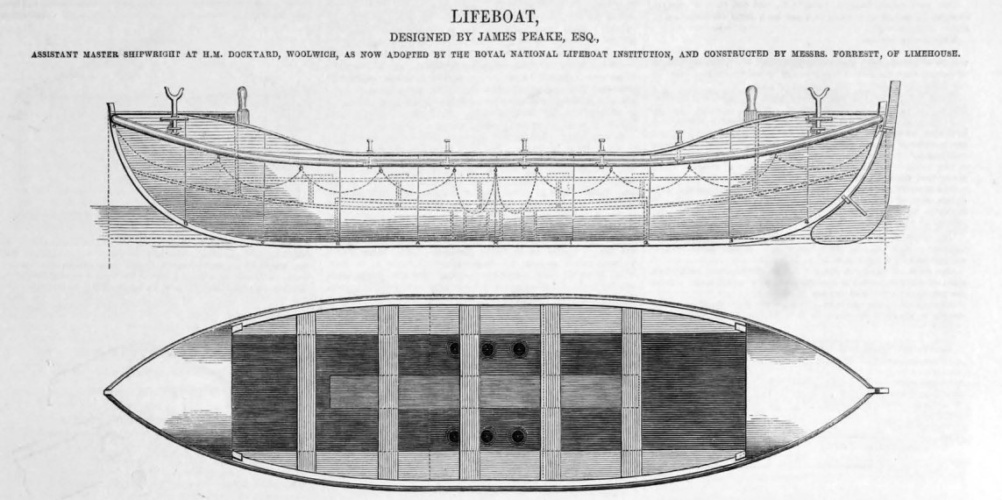February 1856: James Peake's Lifeboat
In February 1856 The Engineer reported on how the perilous task of saving lives at sea was made safer by a new lifeboat design. Jason Ford reports.
The RNLI has been saving an average of 722 lives a year since its founding as the Royal National Institution for the Preservation of Lives and Property from Shipwreck in 1824. The organisation currently operates a fleet of over 400 vessels that are categorised as high-speed all-weather lifeboats (ALBs) and equally nimble inshore lifeboats. The Shannon Class lifeboat was the latest to join RNLI’s fleet, boasting a top speed of 25 knots that is abetted by its two 13l Scania D13 650hp engines and twin Hamilton HJ364 waterjets.

In 1856, a full 34 years before the first steam-driven lifeboat was brought into service, The Engineer described a design by James Peake that relied on the brute force of oarsmen for propulsion and an improved function that has long been standard on ALBs, namely the ability to self-right.
Register now to continue reading
Thanks for visiting The Engineer. You’ve now reached your monthly limit of premium content. Register for free to unlock unlimited access to all of our premium content, as well as the latest technology news, industry opinion and special reports.
Benefits of registering
-
In-depth insights and coverage of key emerging trends
-
Unrestricted access to special reports throughout the year
-
Daily technology news delivered straight to your inbox










Water Sector Talent Exodus Could Cripple The Sector
Maybe if things are essential for the running of a country and we want to pay a fair price we should be running these utilities on a not for profit...